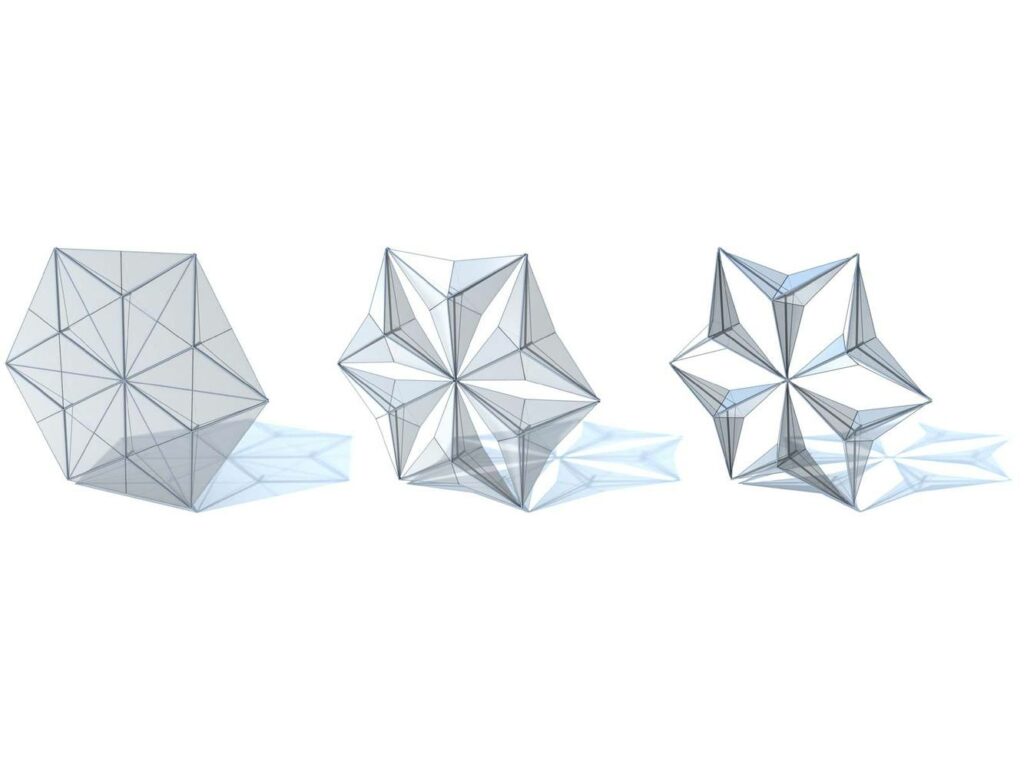
Master the Development of Sustainable Architectural ConceptS
START IN OCTOBER 7th
Innovating Tradition: The Al Bahar Towers’ Architectural Marvel in Abu Dhabi
Nestled in the heart of Abu Dhabi, the Al Bahar Towers stand as a beacon of architectural innovation and sustainability. Marrying the rich tapestry of Islamic tradition with the pulsating beat of modern design, these towers are not just buildings; they’re a statement.
Introduction to Al Bahar Towers
From afar, the Al Bahar Towers cut a striking figure against Abu Dhabi’s skyline. But it’s not just their height or silhouette that captures attention; it’s the dance of tradition and innovation that plays across their facade. With accolades like the 2012 Tall Building Innovation Award tucked under their belt, these towers are more than just office spaces; they’re icons.
Key Details at a Glance:
- Location: Abu Dhabi, United Arab Emirates
- Height: 145 meters
- Awards: 2012 Tall Building Innovation Award, LEED Silver rating
Architectural Innovation and Design
Dive into the design of Al Bahar Towers, and you’re diving into a sea of creativity. The towers’ exterior, a dynamic skin of over 2,000 geometric patterns, plays a daily game of hide and seek with the sun. Inspired by the traditional “mashrabiya”, this facade is no ancient relic; it’s a cutting-edge solar shield, keeping the interiors cool while slashing energy consumption by half.
The Magic of the Mashrabiya:
- Function: Reduces solar gain by over 50%
- Inspiration: Traditional Islamic lattice shading device
- Innovation: World’s largest computerized dynamic facade
Sustainability and Environmental Impact of Al Bahar Towers
In the scorching heat of Abu Dhabi, where the sun reigns supreme, Al Bahar Towers stand as a testament to sustainable design. By reducing solar gain, these towers don’t just cut down on air conditioning needs; they slash CO2 emissions by a staggering 1,750 tonnes annually. It’s a bold step forward in the dance of architecture and sustainability, proving that skyscrapers can reach for the skies while keeping their carbon footprint firmly on the ground.
By the Numbers:
| Sustainability Feature | Impact |
|---|---|
| Solar Gain Reduction | 50% |
| CO2 Emissions Cut | 1,750 tonnes/year |
| Energy Consumption | 50% reduction |
Al Bahar Towers are more than just structures; they’re a lesson in balancing form with function, tradition with innovation. As they stand tall in Abu Dhabi, they remind us that the future of architecture isn’t just about reaching higher but also about thinking smarter and treading lighter on our planet.

The Responsive Facade of Al Bahar Towers Explained
At the heart of the Al Bahar Towers’ ingenuity lies its responsive facade. Picture this: a wall that breathes, dances, and reacts to the sun’s every move. It’s like watching a ballet of shadows and light, orchestrated by the towers’ intelligent design. This facade isn’t just about aesthetics; it’s a masterclass in engineering and environmental stewardship.
How It Works:
Imagine 2,000 honeycomb panels that open and close in response to the sun’s journey across the sky. These panels reduce the heat and glare inside the towers, minimizing the need for air conditioning and artificial lighting. It’s a symphony of efficiency and sustainability, playing out on the grand stage of Abu Dhabi’s skyline.
Construction and Technical Challenges
Bringing the Al Bahar Towers to life was no small feat. It required pushing the boundaries of what’s possible in construction and architecture. The creation of the world’s largest dynamic facade posed unique challenges, from the programming of individual panels to ensuring they could withstand the harsh desert environment.
Overcoming the Odds:
- Engineering Marvel: Designing a system that could automatically adjust each panel required innovative thinking and state-of-the-art technology.
- Durability in Design: The towers had to be resilient against extreme temperatures, sandstorms, and the saline atmosphere of the Arabian Gulf.

Cultural and Historical Context of Al Bahar Towers
The Al Bahar Towers do more than just stand tall; they tell a story. Drawing inspiration from the “mashrabiya”, they bridge the gap between Abu Dhabi’s rich past and its futuristic ambitions. This isn’t just architecture; it’s cultural preservation through modern interpretation.
A Nod to Heritage:
The use of the mashrabiya goes beyond aesthetics. It’s a tribute to traditional Arabic architectural practices, reimagined for the 21st century. The towers stand as a testament to the region’s ability to innovate while honoring its roots.
The Al Bahar Towers encapsulate the spirit of Abu Dhabi: a city that respects its past while boldly stepping into the future. Through innovation, sustainability, and a deep connection to cultural heritage, these towers are more than just a place of work; they’re a landmark in the truest sense of the word, embodying the essence of their environment and the vision of their creators.
Public and Community Impact
Al Bahar Towers have transcended their role as mere office buildings to become a vibrant part of Abu Dhabi’s community fabric. By integrating public spaces, they invite interaction and engagement, fostering a sense of belonging among the city’s residents and visitors.
Community Engagement Spaces:
- Observation Deck: Offering panoramic views of Abu Dhabi, accessible to the public.
- Gardens and Open Spaces: Internal gardens and open-air spaces for relaxation and informal meetings.
- Cultural Exhibitions: Spaces dedicated to showcasing the rich heritage of the UAE and the innovative aspects of the towers’ design.
Al Bahar Towers and Future of Architecture in Abu Dhabi
The Al Bahar Towers serve as a benchmark for future architectural projects in Abu Dhabi, demonstrating that it is possible to blend tradition with innovation and sustainability with functionality.
Key Takeaways for Future Projects:
- Sustainability as Standard: Incorporating eco-friendly design elements from the outset.
- Cultural Relevance: Ensuring new buildings pay homage to local traditions and architecture.
- Technological Integration: Utilizing the latest in smart building technologies for efficiency and comfort.
Case Studies and Comparative Analysis
In the broader context of global architecture, Al Bahar Towers stand out not just for their unique facade but also for their commitment to sustainability and cultural integration. Let’s compare them to other notable skyscrapers.
Comparative Analysis:
| Feature | Al Bahar Towers | Other Notable Skyscrapers |
|---|---|---|
| Dynamic Facade | Yes | Rarely |
| Cultural Integration | High | Variable |
| Sustainability | LEED Silver | Ranges from None to Platinum |
| Public Engagement | High | Low to Medium |
Al Bahar Towers: A Conclusion
Al Bahar Towers not only redefine the skyline of Abu Dhabi but also set a new standard for how buildings can interact with their environment, engage with their community, and honor their cultural heritage. They stand as a testament to the vision of their creators and the potential for future architectural endeavors in the city and beyond.
Through thoughtful design, innovative technology, and a commitment to sustainability, Al Bahar Towers embody the spirit of Abu Dhabi, bridging its rich past with a dynamic and sustainable future.
If you want to learn about UGREEN’s consultancies in Portuguese language, click here.

Master the Development of Sustainable Architectural ConceptS
START IN OCTOBER 7th